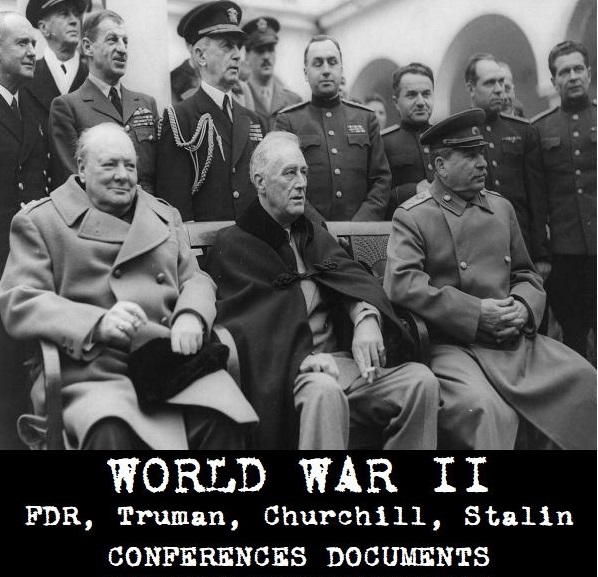
World War II FDR, Truman, Churchill, Stalin Conferences Documents
$19.50
Description
Allied World War II Conferences and Agreements
Detailed Timeline of Main Events from Source:
This timeline focuses on the major World War II conferences and agreements involving the Allied leaders as described in the provided source.
1941
- December 24 – 1942 January 14: ARCADIA Conference (Washington, D.C.)President Roosevelt and Prime Minister Churchill hold their first post-Pearl Harbor strategy conference.
- The Declaration of the United Nations is drafted and signed by the political leaders.
- Military chiefs discuss an invasion of North Africa.
- Arrangements are made for American forces to relieve British troops in Iceland and Northern Ireland.
- Plans are made for American reinforcement of the South Pacific.
- A combined Allied command for Southeast Asia is established.
- January 23 – May 1942: POST-ARCADIA Meetings (Washington, D.C. and London)The Combined Chiefs of Staff hold twenty meetings to work out the details of implementing the ARCADIA decisions.
- Discussions cover force deployments to the Pacific and Great Britain, command arrangements, and the allocation of shipping and supplies.
- The Combined Chiefs discuss the U.S. relief of British forces in Iceland and Northern Ireland.
- Arrangements for the American buildup in the British Isles are addressed.
- The availability of landing craft for possible invasions of the European continent in 1942 and 1943 is discussed.
1943
- January 14-23: CASABLANCA CONFERENCE (Casablanca, Morocco)Roosevelt, Churchill, their military chiefs, and French leaders Henri Giraud and Charles de Gaulle attend.
- The British prevail in the debate to postpone the cross-Channel invasion until 1944.
- A combined staff is organized to plan for the cross-Channel invasion.
- The Allies decide to continue the Mediterranean campaign with an invasion of Sicily.
- A combined strategic air offensive against Germany is launched.
- The Americans are to mount a Pacific offensive against Japan.
- Roosevelt and Churchill issue the Unconditional Surrender doctrine.
- May 15-25: TRIDENT Conference (Washington, D.C.)Roosevelt, Churchill, their military chiefs, and Generals Wavell, Chennault, and Stilwell from the China-Burma-India (CBI) theater participate.
- The British agree to a cross-Channel invasion with a target date of May 1, 1944.
- The allies reaffirm their commitment to the strategic air offensive as preparation for the invasion.
- They agree to continue the Mediterranean offensive with the aim of knocking Italy out of the war.
- The Americans gain support for a stepped-up offensive in the Pacific.
- Operations to assist China are discussed.
- August 14-24: QUADRANT Conference (Quebec)Roosevelt, Churchill, and their military chiefs decide that the cross-Channel attack (OVERLORD) will be the main Anglo-American effort in Europe for 1944, with a target date of May 1.
- They approve the outline plan developed by the Combined Chief of Staff to the Supreme Allied Commander (COSSAC) staff and authorize preparations.
- The combined bomber offensive is to continue with the “highest strategic priority.”
- The offensive against Italy is to continue.
- Planning is authorized for an invasion of southern France as a companion to OVERLORD.
- The allies approve the U.S. schedule of operations in the Central and South Pacific.
- The Southeast Asia Command in the CBI is established.
- The leaders discuss the shift of forces to the Pacific after Germany’s defeat and establish a twelve-month target for finishing off Japan after Germany surrendered.
- November 22 – December 7: SEXTANT – EUREKA Conferences (Cairo and Tehran)Cairo: Roosevelt, Churchill, and Generalissimo Chiang Kai-shek discuss plans for the CBI.
- Tehran: The “Big Three” (Roosevelt, Churchill, and Josef Stalin) state that OVERLORD and the invasion of southern France will be the “supreme operations” in the west in 1944.
- Stalin promises to attack in the east simultaneously with the cross-Channel invasion.
- The Americans and British agree that General Eisenhower will command the invasion.
- Stalin states that the Soviet Union will enter the Pacific war after Germany is defeated.
- The allies agree that the United States will continue its Central and South Pacific drives, including seizure of the Marianas for B-29 raids on Japan.
- The allies discuss the future United Nations organization and post-war Polish boundaries.
- In the Cairo Declaration, the United States, Britain, and China state their intention to strip Japan of all her pre-war and wartime conquests.
1944
- September 12-16: OCTAGON Conference (Quebec)Roosevelt, Churchill, and their military chiefs convene for their last mid-war conference.
- They agree on British and American occupation zones in Germany.
- Roosevelt and Churchill initial the Morgenthau Plan for post-war German de-industrialization.
- Decisions on the Pacific war include approval of the U.S. invasion of Leyte and plans for British fleet participation in the final campaigns against Japan.
1945
- January 20 – February 11: ARGONAUT Conference (Malta and Yalta)Roosevelt, Churchill, Stalin, and their military leaders reach agreements on the occupation of Germany and Austria, including the creation of a French zone in Germany.
- Roosevelt and Stalin make a secret agreement on Soviet territorial gains in the Far East in return for Soviet participation in the war against Japan.
- The Big Three settle the issues of United Nations voting rights and Poland’s government and frontiers.
- The three leaders issue a Declaration on Liberated Europe, committing to free elections and democratic governments in Nazi-liberated countries.
- April 12: President Franklin D. Roosevelt dies. Harry S. Truman becomes President of the United States.
- July 17 – August 2: TERMINAL Conference (Potsdam)Harry S. Truman replaces President Roosevelt as the U.S. representative.
- Clement Attlee replaces Winston S. Churchill as the British representative mid-conference after his party loses the British post-war election.
- The conferees discuss surrender terms for Japan, boundaries and peace terms for Europe, and Poland’s frontiers and government.
- The Potsdam Declaration reaffirms the Allies’ demand for Japan’s unconditional surrender and divestiture of its empire, but promises to respect the human rights of the Japanese people.
- Privately, Truman informs Stalin that the United States has successfully tested a super-bomb.
Cast of Characters and Brief Bios:
- Franklin D. Roosevelt: President of the United States during most of World War II. Played a central role in formulating Allied strategy and post-war planning until his death in April 1945.
- Harry S. Truman: Vice President who became President of the United States upon Roosevelt’s death. Led the U.S. delegation at the Potsdam Conference and made the decision to use the atomic bomb.
- Winston S. Churchill: Prime Minister of the United Kingdom during World War II. Worked closely with Roosevelt on Allied strategy and post-war vision. Was replaced by Clement Attlee during the Potsdam Conference after a change in the British government.
- Joseph Stalin: Leader of the Soviet Union during World War II. Played a crucial role in the Tehran, Yalta, and Potsdam conferences, negotiating the Soviet role in the war against Germany and Japan, as well as post-war arrangements in Eastern Europe and Asia.
- Charles de Gaulle: Leader of the Free French Forces and later President of France. Attended the Casablanca Conference, representing French interests alongside Henri Giraud.
- Henri Giraud: French general who initially rivaled de Gaulle for leadership of the French forces. Attended the Casablanca Conference.
- Chiang Kai-shek: Leader of the Nationalist government of China during World War II. Participated in the Cairo Conference, discussing Allied strategy in the China-Burma-India theater against Japan.
- Clement Attlee: Leader of the Labour Party who replaced Winston Churchill as Prime Minister of the United Kingdom during the Potsdam Conference after his party won the general election.
- General Wavell: British Army officer who served in various commands, including in the China-Burma-India theater. Attended the TRIDENT Conference.
- General Chennault: American military aviator who commanded the Flying Tigers and later the Fourteenth Air Force in China. Attended the TRIDENT Conference.
- General Stilwell: American Army officer who served as the Chief of Staff to Chiang Kai-shek and commanded U.S. forces in the China-Burma-India theater. Attended the TRIDENT Conference.
- General Eisenhower: American Army officer who was later appointed as the Supreme Allied Commander for the planned invasion of Western Europe (Operation Overlord). His command was agreed upon at the Tehran Conference.
World War II FDR, Truman, Churchill, Stalin Conferences Documents
3,550 pages of minutes of the World War II inter-Allied conferences and supporting documents, reports, and directives.
Conferences involving, President Franklin D. Roosevelt, President Harry S. Truman, Prime Minister Winston S. Churchill, Soviet leader Joseph Stalin, French leader Charles de Gaulle, French leader Henri Giraud, and Generalissimo Chiang Kai-shek.
During World War II, President Franklin D. Roosevelt and Prime Minister Winston S. Churchill formulated allied grand strategy at a series of high-level conferences held in Washington, DC, Casablanca, Quebec, Cairo, Tehran, Yalta, and Potsdam. At the Tehran, Yalta, and Potsdam conferences, the Russian leader, Joseph Stalin, also played a major role. Under policy guidance from their national leaders, the newly formed US Joint Chiefs of Staff and their British counterparts, known collectively as the Combined Chiefs of Staff, hammered out the military details of allied strategy.
The minutes of the Combined Chiefs’ meeting at the major conferences touch on virtually every policy and strategy issue of World War II, from initial troop deployments to counter Axis aggression, through the debates about the location and timing of the principal Anglo-American offensives, to the settlement of post-war occupation boundaries. Besides being an invaluable primary source on the early years of the Joint Chiefs of Staff and on the planning and conduct of World War II, these documents also offer insights for today on the problems of managing a global coalition war. Originally highly classified documents, the minutes were declassified on October 3, 1973.
The Meetings:
ARCADIA (Washington, D.C., 24 December 1941-14 January 1942). Roosevelt, Churchill, and the U.S. and British Chiefs of Staff conducted their first post-Pearl Harbor strategy conference. The political leaders drafted and signed the Declaration of the United Nations. The military chiefs discussed an invasion of North Africa, completed arrangements for American forces to relieve British troops in Iceland and Northern Ireland, made plans for American reinforcement of the South Pacific, and set up a combined allied command for Southeast Asia.
POST-ARCADIA (Washington, D.C. and London, 23 January 1941-19 May 1942). At twenty meetings, the Combined Chiefs of Staff worked out the details of implementing the ARCADIA decisions. They dealt with force deployments to the Pacific and Great Britain, command arrangements, and the allocation of shipping and supplies. The Combined Chiefs discussed the U.S. relief of British forces in Iceland and Northern Ireland, arrangements for the American buildup in the British Isles, and the availability of landing craft for possible invasions of the European continent in 1942 and 1943.
CASABLANCA CONFERENCE VOLUME 1 and VOLUME 2 (Casablanca, Morocco, 14-23 January 1943). This was the first of the great Allied mid-war conferences, with Roosevelt, Churchill, their military chiefs of staff, and the French leaders Henri Giraud and Charles de Gaulle in attendance. In the major U.S.-British debate, the British prevailed. The Allies postponed the cross-Channel invasion until 1944, but organized a combined staff to plan for it. For the immediate future, they would continue the Mediterranean campaign with an invasion of Sicily. They also decided to launch a combined strategic air offensive against Germany, and the Americans were to mount a Pacific offensive against Japan. Roosevelt and Churchill issued the Unconditional Surrender doctrine.
TRIDENT (Washington, D.C., 15-25 May 1943). Principal participants were Roosevelt, Churchill, their military chiefs of staff, and Generals Wavell, Chennault, and Stilwell from the China-Burma-India (CBI) theater. The Americans secured British agreement to a cross-Channel invasion with a target date of 1 May 1944. The allies reaffirmed their commitment to the strategic air offensive as preparation for the invasion. They agreed to continue the Mediterranean offensive with the aim of knocking Italy out of the war. The Americans won support for a stepped-up offensive in the Pacific, and the allies discussed operations to assist China.
QUADRANT (Quebec, 14-24 August 1943). Roosevelt, Churchill, and their military chiefs of staff decided that the cross-Channel attack, codename OVERLORD, was to be the main Anglo-American effort in Europe for 1944, with a target date of 1 May. They approved the outline plan developed by the combined Chief of Staff to the Supreme Allied Commander (COSSAC) staff and authorized preparations. The combined bomber offensive was to continue with the “highest strategic priority.” At the same time, the offensive against Italy was to continue. Planning was authorized for an invasion of southern France as a companion to OVERLORD. The allies approved the U.S. schedule of operations in the Central and South Pacific and established the Southeast Asia Command in the CBI. The leaders discussed the shift of forces to the Pacific after Germany’s defeat and established a twelve-month target for finishing off Japan after Germany surrendered.
SEXTANT – EUREKA (Cairo and Tehran, 22 November-7 December 1943). Principal participants were Roosevelt, Churchill, the U.S. and British chiefs of staff, Generalissimo Chiang Kai-shek (Cairo), and Josef Stalin (Tehran). The Americans, British, and Chinese discussed plans for the CBI. The Big Three (Roosevelt, Churchill, and Stalin) stated that OVERLORD and the invasion of southern France would be the “supreme operations” in the west in 1944. Stalin promised to attack in the east simultaneously with the cross-Channel invasion. The Americans and British agreed that General Eisenhower would command the invasion. Stalin stated that the Soviet Union would enter the Pacific war after Germany was defeated. The allies agreed that the United States would continue its Central and South Pacific drives, including seizure of the Marianas as a base for B-29 raids on Japan. The allies discussed the future United Nations organization and post-war Polish boundaries. In the Cairo Declaration, the United States, Britain, and China stated their intention to strip Japan of all her pre-war and wartime conquests.
OCTAGON (Quebec, 12-16 September 1944). Roosevelt, Churchill, and their military chiefs of staff convened in the last of their mid-war conferences. They agreed on British and American occupation zones in Germany. Roosevelt and Churchill initialed the Morgenthau Plan for post-war German de-industrialization. Decisions on the Pacific war included approval of the U.S. invasion of Leyte and plans for British fleet participation in the final campaigns against Japan.
ARGONAUT (Malta and Yalta, 20 January-11 February 1945). Roosevelt, Churchill, Stalin, and their military leaders reached agreements on the occupation of Germany and Austria, including the creation of a French zone in Germany. Roosevelt and Stalin made a secret agreement on Soviet territorial gains in the Far East in return for Soviet participation in the war against Japan. The Big Three settled the issues of United Nations voting rights and Poland’s government and frontiers. The three leaders issued a Declaration on Liberated Europe in which they committed themselves to free elections and democratic governments in the countries freed from the Nazis.
TERMINAL (Potsdam, 17 July – 2 August 1945). This conference saw a changing of the guard among American and British leaders. Harry S. Truman replaced President Roosevelt, who had died on 12 April. In mid-conference, Clement Atlee replaced Churchill, whose party had lost Britain’s first post-war election. The conferees discussed surrender terms for Japan, boundaries and peace terms for Europe, and Poland’s frontiers and government. The Potsdam Declaration reaffirmed the Allies’ demand for Japan’s unconditional surrender and divestiture of its empire, but promised to respect the human rights of the Japanese people. Privately at this meeting, Truman informed Stalin that the United States had successfully tested a super-bomb.
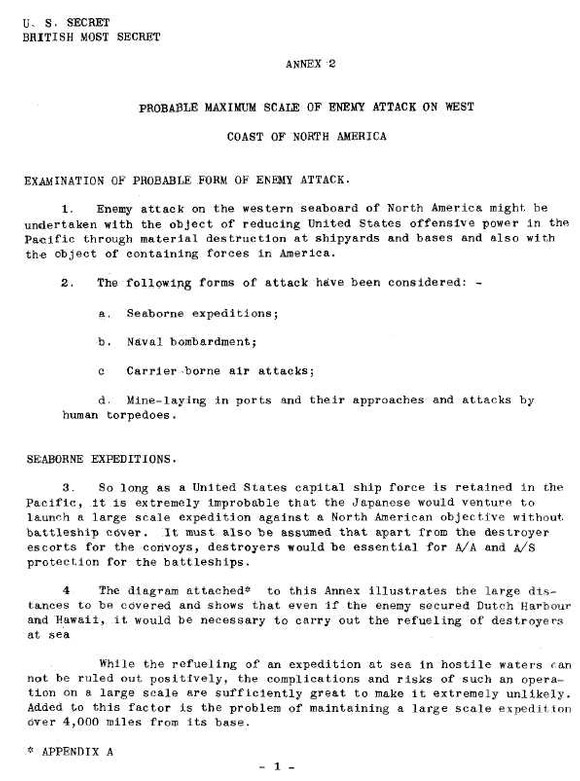
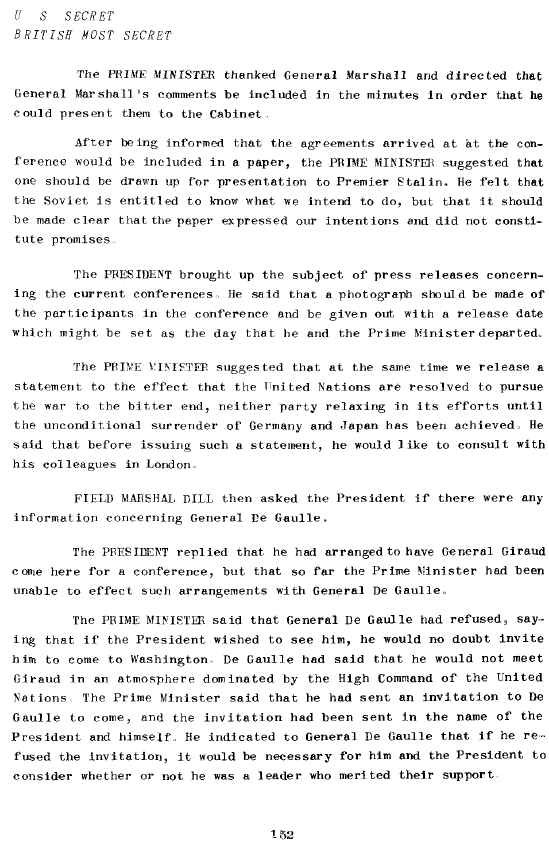
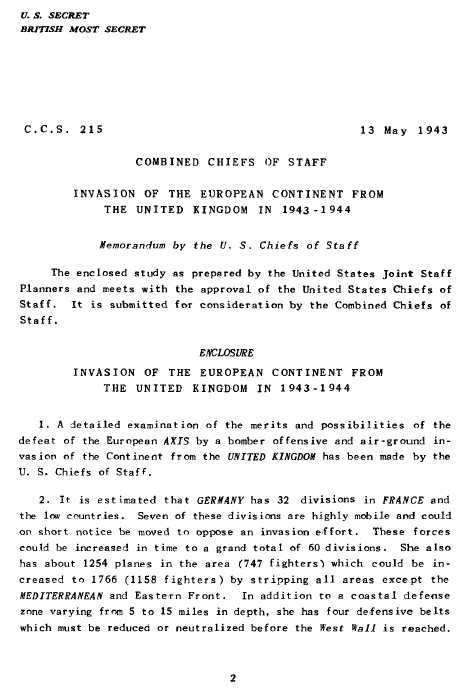
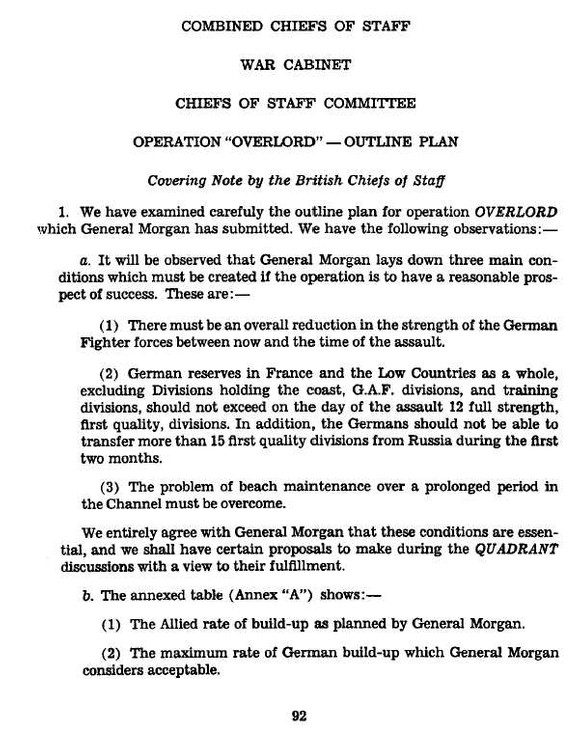
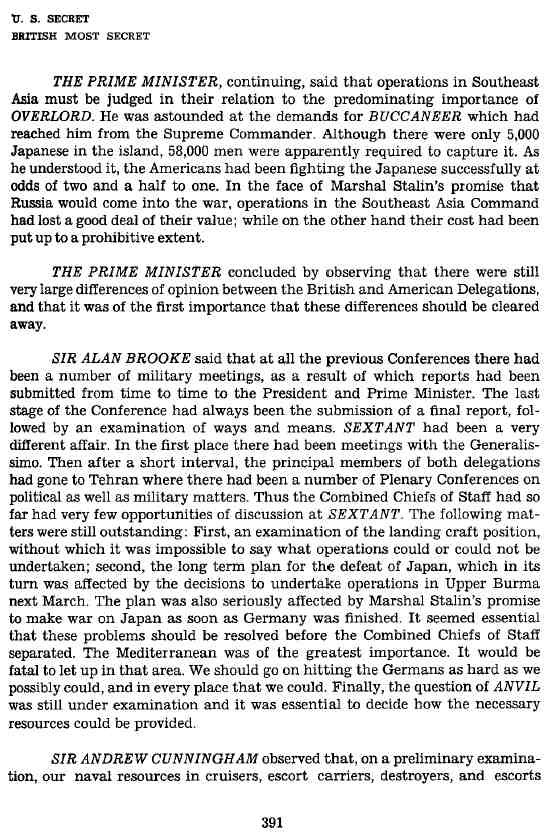

Related products
-
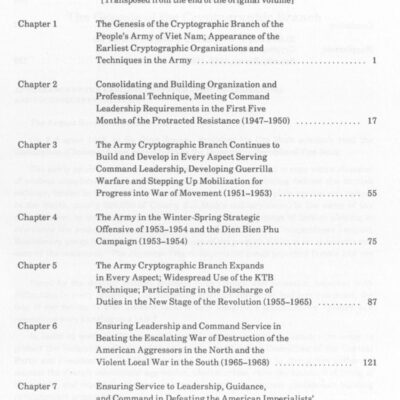
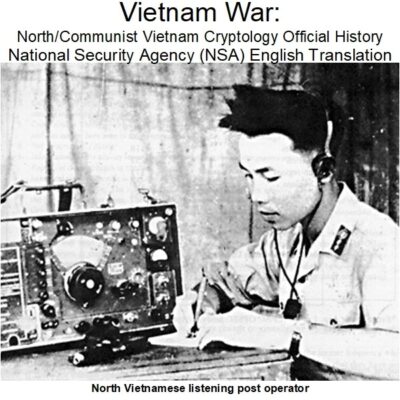
Vietnam War: Cryptology in North Vietnam – NSA Official History
$4.90 Add to Cart -
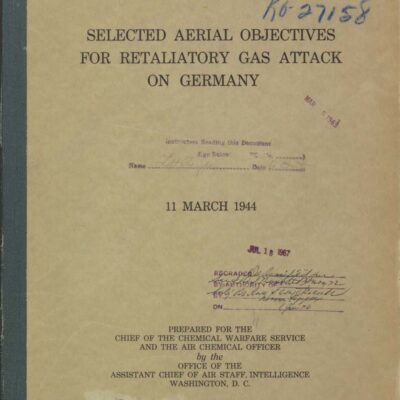
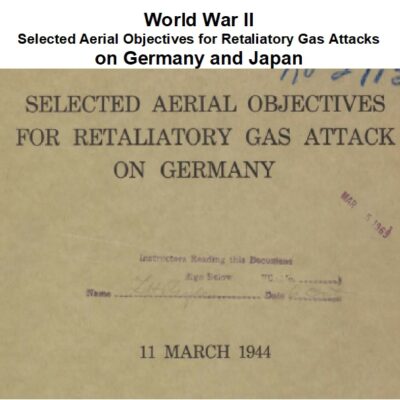
World War II: Targeted Aerial Objectives for Retaliatory Gas Attacks on Germany and Japan
$3.94 Add to Cart -
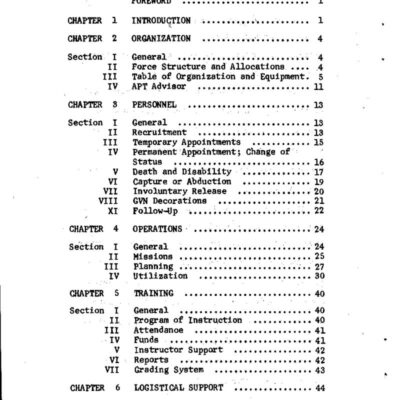
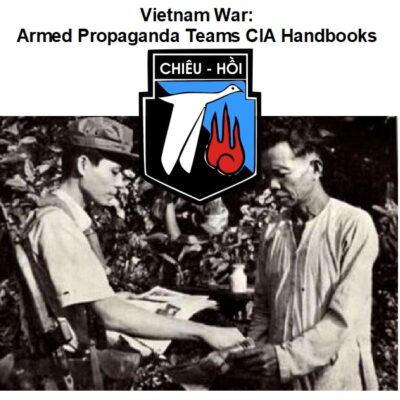
Vietnam War: Armed Propaganda Teams CIA Handbooks
$1.99 Add to Cart -
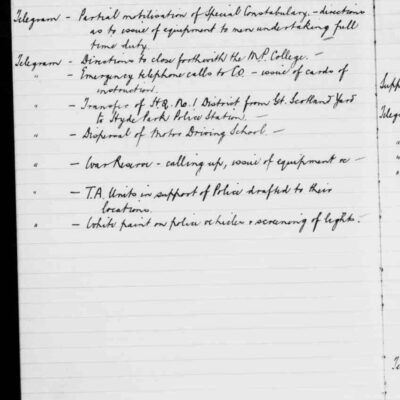
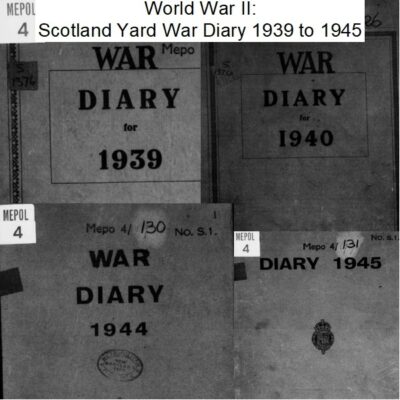
World War II: Scotland Yard War Diary from 1939 to 1945
$3.94 Add to Cart